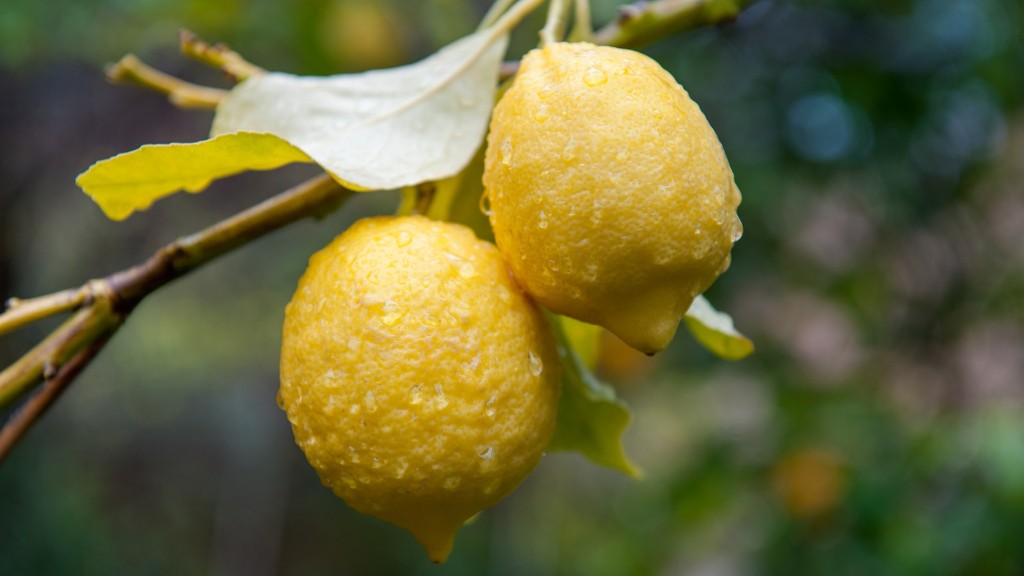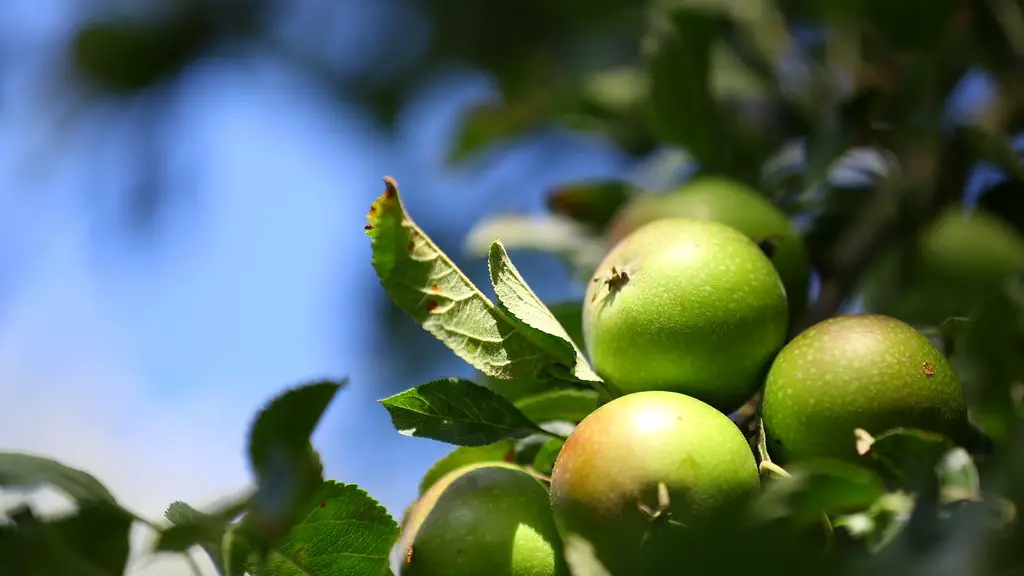Avocados are delicious, nutritious and surprisingly, fairly easy to grow. It is possible to grow an avocado tree in a large pot so you can indulge in your own homegrown avos. The trick is to mimic the wild conditions of its native tropical climate, which means providing a large pot with adequate drainage, good soil, optimum light and water with an abundance of love.
Avocados grow best in temperatures between 12 and 32 Celsius and love a bit of wind. A large terracotta pot that has plenty of drainage holes is the best way to go. The size of the pot should be equal to the size of the mature tree, for example, if the tree is expected to reach between four and five feet in height, then the pot should measure at least 20 inches deep and 30 inches in diameter.
When it comes to soil, avocado trees take off in free-draining, rich soils that contain plenty of organic matter. A good potting mix – often called a premium potting mix – is ideal, or try mixing two parts compost/manure with one part sand or perlite. You also need to ensure your tree receives enough sunshine, so place it in an area of your yard or balcony that receives plenty of light.
Watering your avocado tree is all about balances. You want to be constantly moistening the soil but avoid getting it too wet or too dry. Generally, aim to water it twice a week in summer and once a week in winter. During hot, dry spells you may even want to water it more often. With regular watering and minimal stress, a tree planted in a large pot can grow over four metres in height.
Fertilizing Your Avocado Tree
A healthy avocado tree relies on regular fertilizing throughout the year. This can help to keep your tree vibrant, productive and free from pests and diseases. A balanced organic fertilizer like a 3-2-1 ratio sourced from organic materials is the best route. Make sure you dilute the fertilizer before applying it directly to the soil. Spread it evenly around the base of the tree, but avoid getting it onto the trunk.
It’s also important to watch out for pests and diseases like scale, mealy bugs, aphids and root rot. Check your tree often, and if you do see some signs of stress, treat them as soon as possible. You may need to use a pesticide-free oil spray, neem oil spray or insecticidal soap.
Helpful Tips
Finally, it’s important to remember that avocado trees need a little bit of help to do well in a pot. Here are a few extra tips to help you get the best from your avocado tree:
- Invest in a self-watering container for easy irrigation and regular feeding to avoid root rot,
- Add a mound of soil or sand in the pot and position the tree in the centre,
- Stake the tree securely to provide additional support,
- Decide whether you plan to let the tree produce fruit, as this will require more pruning and care.
Preparing for Fruiting
If you would like your avocado tree to set fruit, you’ll want to bring the tree into bloom. Avocado trees are self-fertile, meaning they do not need to be cross-pollinated with another tree. The trees can self-pollinate, but it’s a good idea to help the process along with a small hand-held feather duster to brush the pollinating powder inside the flowers. Once pollinated, it can take up to six months before the fruit is ready to be harvested.
Avocado trees need certain conditions to flower and fruit and these will vary depending on the type of tree. For example, cold temperatures below 5C can halt growth, and in some cases, trees need up to 18 hours of daylength to set fruit. Flowering may be inhibited if the tree gets too much nitrogen, so limit the amount of nitrogen-rich fertilizer you feed the tree.
When it comes to flower care and fruit protection, there are certain steps you need to take to ensure your tree’s growth and progress. Prune new growth aggressively in order to create a bushier tree, regularly removing dead or diseased branches. You should also hand-pollinate flowers in order to increase yields, and gently hand-pick matured fruit in order to protect the remaining fruits and flowers.
Harvesting the Fruit
When you harvest your avocado trees, it’s important to make sure the fruit is ripe. Unripe avocados that are picked too early won’t ripen properly and won’t have the creaminess and texture you’ve worked so hard to achieve. Look for an avocado that is firm but slightly yielding when you press it with your thumb. You may also want to gently pull or twist the fruit to ensure it’s ripe before you pick it.
Once harvested, pick early-ripening varieties and let them sit on the tree for up to two weeks to ensure they’re fully ripened. To order to slow down the ripening process after picking, store your avocados in the fridge. This will help to keep them fresh and flavourful for up to three weeks. You can also freeze avocados for up to two months by pureeing them with a bit of lemon juice.
Pressure Treated Sealing
If you are growing an avocado tree in a pot, it is highly recommended to protect it with a layer of pressure treated sealing. This is a protective coating usually applied to wooden furniture and garden structures, and acts to seal out moisture. The layer of sealing helps to preserve the wooden structure from damage caused by harsh weather conditions, as well as preventing rot and infestations.
Applying pressure-treated sealing to your avocado tree pot is easy to do. Simply clean the pot and the surrounding area with a wire brush and then apply a thin layer of sealing with a paintbrush. This should be repeated once or twice a year to ensure the protection is maintained. You should also inspect the pot now and then and ensure that the sealed area is still watertight.
Maintaining the Tree
Avocado trees need regular maintenance in order to ensure they stay healthy and produce high-quality fruit. During the growing season, inspect the tree on a regular basis for pests, diseases and anything else that could be damaging it. For example, if your tree is experiencing a lot of wind, you may want to stake it for added support.
You can also help your tree get through the cooler winter months if temperatures fall close to freezing. Make sure you don’t let the soil dry out and cover the tree with a sheet or blanket at night. You should also prune dead branches and suckers during winter months, as this helps to keep your tree neat and tidy.
Storing the Avocados
Once the avocados are ripe, it is important to store them correctly in order to keep them from going bad. Most avocados will last for several days at room temperature, however a refrigerator is best for long-term storage. Store them wrapped tightly in plastic wrap or aluminum foil, or place them in an airtight bag or container. Never freeze an avocado, as this will cause it to turn brown and mushy.
If your avocados are already ripe and you plan to use them immediately, one smart way to store them until needed is to cut them in half, scoop the flesh out into a bowl, and cover them with a layer of plastic wrap. This stops the exposed areas from going brown.
Preparing the Avocados
The easiest way to prepare an avocado is to cut it in half and simply scoop the flesh out with a spoon. From here, you can season and mash it up into a creamy guacamole, add it to a salad or use it in place of butter on toast. You can also finely dice it, or add it to a smoothie or juice.
If you plan to cut up an avocado for a vegetable or fruit plate, it’s important to cut it evenly. Cut it in half lengthwise, then slice each half downwards into thirds, then scoop out the fruit – it’s that simple! The trick is to cut the avocado as close to the skin as possible to ensure the maximum amount of fruit is extracted.
In conclusion, growing an avocado tree in a large pot may take a bit of time and patience, but the rewards are worth it. It’s a great way to enjoy your own delicious avocados, whether you plan to eat them fresh or add them to salads and dishes. With the right care and regular maintenance, you can watch your avocado tree thrive and provide food for years to come.


